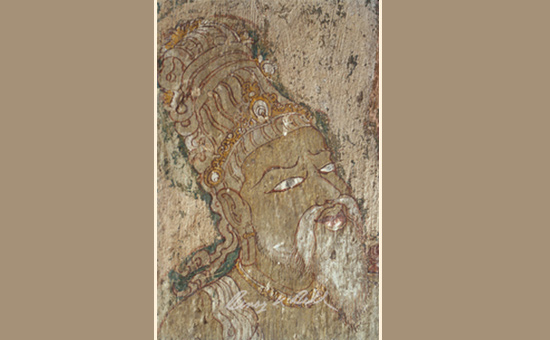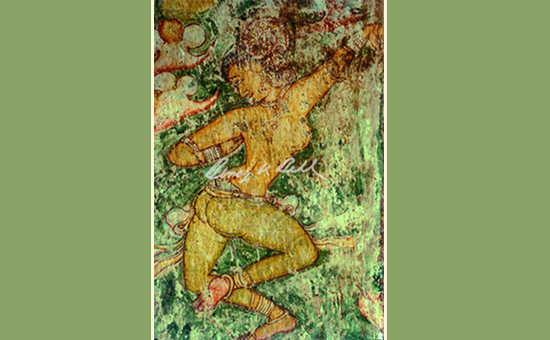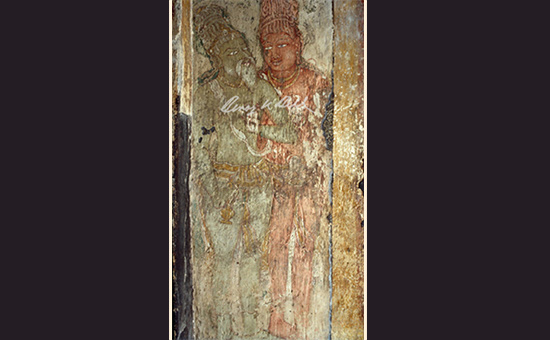- About & how did the author photograph paintings on inner ambulatory of the Big Temple Tanjore.
In response to a suggestion by a friend, I am sharing the story behind
the challenging photography of the inner ambulatory paintings of the Brhadiswara temple
at Thanjavur.
The
documentation of the narrow and dark inner ambulatory was done using long
exposures.
In fact,
IGNCA had approached me in 1991, because they as well as French photographers
were finding it difficult to photograph these paintings using lights. This was
because of the surface reflections of the paintings, in the
extremely restricted spaces of the ambulatory.
These
paintings had been recently uncovered by the Archaeological Survey of India, by
removing the plaster and the later 17th-century Nayak paintings,
which had covered these end-10th century Chola paintings.
This was
one of my most challenging documentations, as there was only five and a half
feet of space between the inner and outer walls of the ambulatory. The
paintings went up to a height of 20 feet on these walls, making it difficult to
get a proper perspective in the restricted space.
I did
this documentation in 1992, taking about 1,000 photographs. To photograph
the paintings with the correct perspective, I had made a collapsible
aluminium platform to take me up to various levels. This was taken inside
the ambulatory and then assembled.
While
photographing from the top level at about 20 feet, I discovered more than 200
sculptures which had not been seen before. The Thanjavur people and
newspapers were ecstatic about this discovery.
It was a
wonderful few weeks inside the ambulatory.
 Celestial Musicians, Mural Painting, end-10th century.
Celestial Musicians, Mural Painting, end-10th century.
 Temple Dancer, Mural Painting, end-10th century.
Temple Dancer, Mural Painting, end-10th century.
 King Rajaraja Chola & Guru Karuvurar, Mural Painting, end-10th
century.
King Rajaraja Chola & Guru Karuvurar, Mural Painting, end-10th
century.
Brhadiswara documentation, the
consequences
In response to further questions from friends, I am sharing the
consequences of the Brhadiswara inner ambulatory documentation and its presentation
internationally.
A few months after the photography of the paintings, in 1993, when I showed these photographs to Dr. Milo C. Beach, then Director of the US National Galleries of Asian Art and the known American expert on Indian paintings, he said “after what you have shown me, I have to revise my understanding of the history of Indian painting”.
He explained to me that art historians around the world had not been aware of a continuous tradition of painting in ancient India.
The
Ajanta paintings of the 5th century were known, but not other
paintings before the Ajanta paintings, nor after them for the next 700 years,
were known. Therefore, the Ajanta paintings were treated as a flash in the pan
and not a part of a known tradition of art. All studies and courses in Indian
painting took up the history only from the medieval period onwards.
In his words, “The paintings of the 10th century which you are showing me
have the same quality of art as the Ajanta paintings of the 5th century and this shows that there would have been a continuous tradition of painting in ancient India”.
I
subsequently went on to document many other remains of Indian paintings of
every century, from the 5th to the 12th century and was
able to clearly establish a continuous tradition of
ancient Indian paintings. These ancient murals are also seen now to be
the foundations of the manuscript and miniature paintings which are seen from
the medieval period in India.
Universities and museums around the world have responded very warmly to the exquisite quality of this artistic tradition. My illustrated talk ‘The Murals of India’ still remains one of my most popular lectures.
To read articles on Traditional Indian Art click here All pictures ie 4 are courtesy author.
Also see albums of India’s Painting tradition
1. Bundela
Paintings Orchha
2. Bundi Fort
3. Nagaur Fort ie
near Bikaner
4. Nayak
Palace Madurai
5. Maratha
Palace Tanjore
6. Mud
Paintings Bhungas Kutch
To
see album of Big Temple Thanjavur